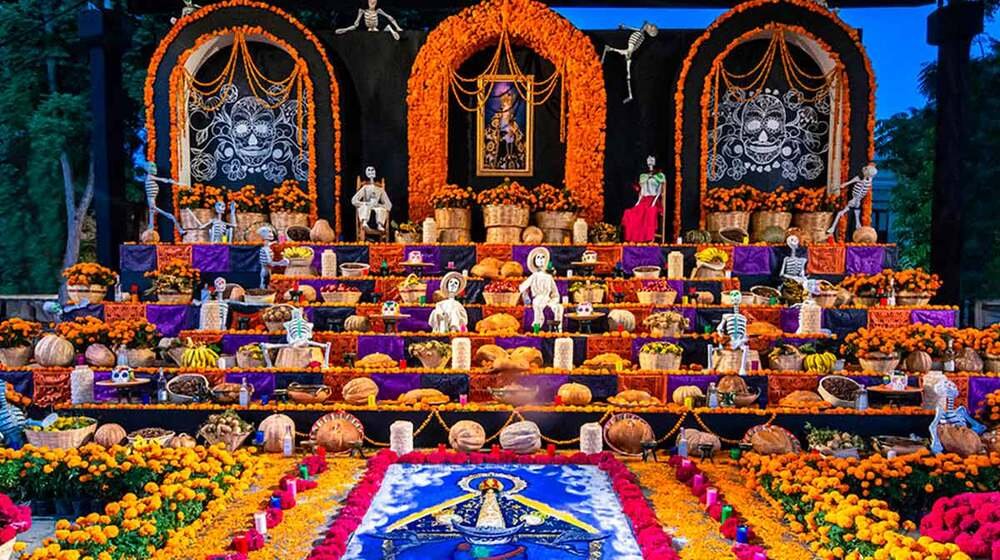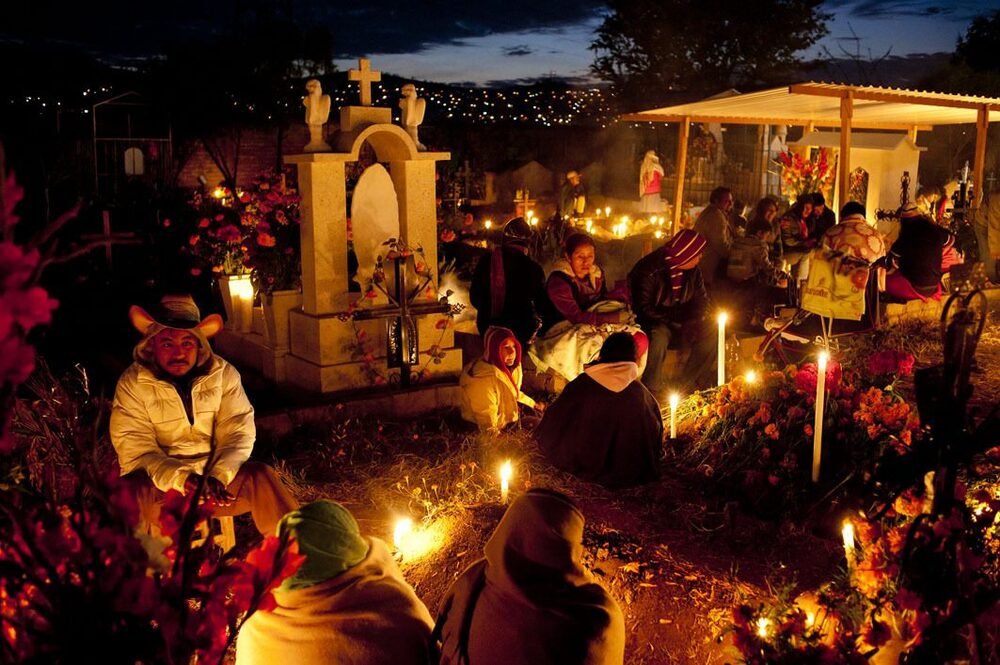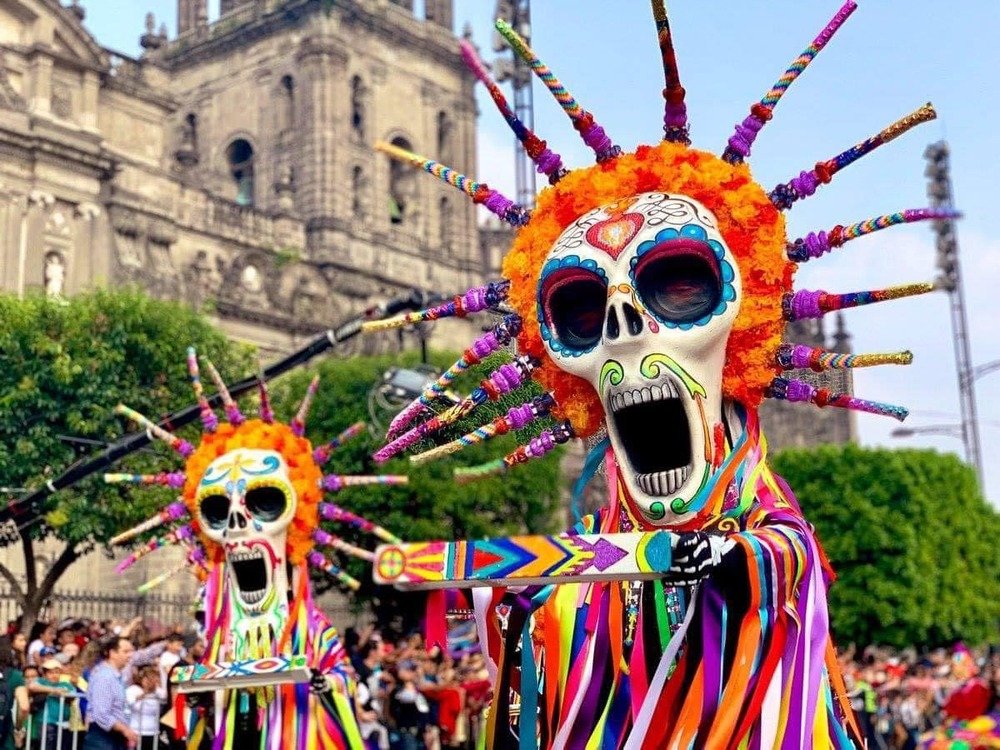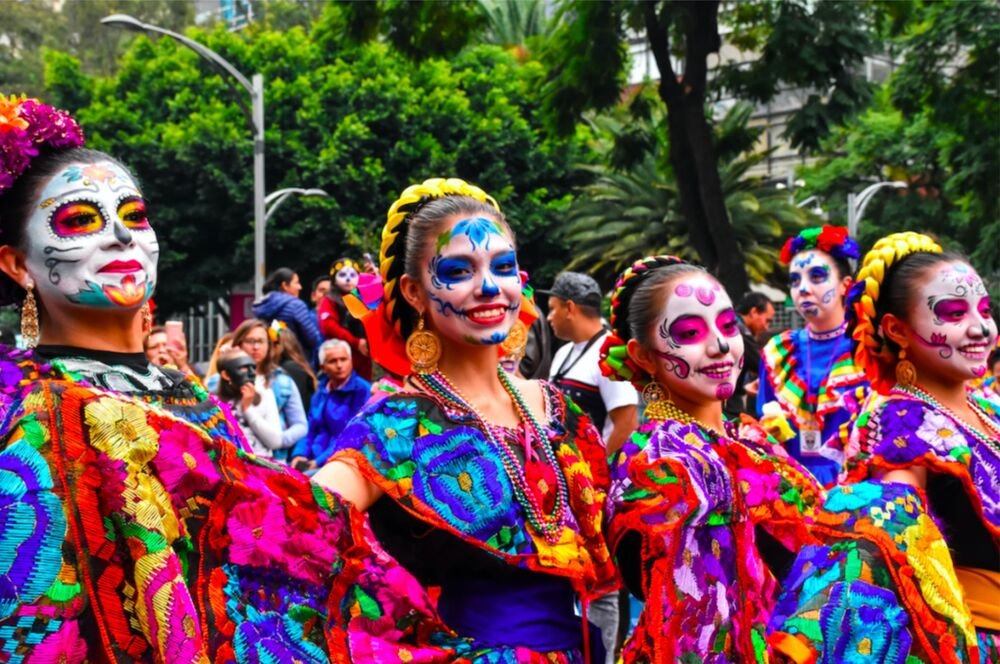
Day of the Dead
One of the most iconic and important celebrations in Mexico is “Dia de Muertos” or Day of the Dead, which is celebrated on November 2nd.
This tradition dates back to pre-Hispanic times, when the death of a person was a main ritual. When someone died, the person was wrapped in a “petate” is an organic rug. A ritual of preparing the body for burial was carried out and then the person was buried with his or her personal items or items that the deceased one liked in life. These items were to accompany him or her on the journey to Mictlan or the afterlife.

To indigenous people, the Day of the Dead represents the transition and return of the soul of the deceased to the world of the living. There, the person will live with their relatives and be nourished by the essence of the food that is offered to them on altars placed in his or her honor.
Every year, families in Mexico place “La ofrenda” (the offering), which is a cultural mixture of indigenous and Spanish elements from both worlds. The main elements found on these altars are: papel picado, cempasúchil flowers, candles, fruit, tamales, mole, water, salt, puff pastry (or pan de muerto), liquor, incense, copal, and a portrait of the loved one who has died.

November 2nd, which is known as All Saints’ Day, is the peak of the celebration. In some places, like Mixquic in the Tláhuac Town in Mexico City, people spend the night in the pantheon dedicating prayers and singing to the people who have left. The night becomes a living flame, full of light from the glow of the candles and the aroma of the cempasuchil flowers. The flowers symbolize the path to be traveled by the deceased, and enables him or her to reach his or her offerings and be with his or her loved ones. This event is known as “La Alumbrada”.

Other prominent states and places in Mexico who also celebrate during this holiday are: Janitzio and Pátzcuaro in Michoacán, Xochimilco in Mexico City, and Cuetzalan in Puebla, just to name a few. In Mexico City, the “Dia de Muertos” parade takes place, with cars representing Mexican culture, people dancing in the streets with costumes of catrinas and skulls. It is an event full of color, music, and joy.

Without a doubt, the day of the dead is an iconic holiday in Mexico. It represents the traditions of the indigenous people and the mix of cultures, colors, and aromas. There is also happiness for life and the joy of its people that they can share with their loved ones and with the whole world.

Start Learning Spanish Today!
Ready to embark on a journey of language and culture? Join Spoken Learning today and unlock endless opportunities with our online Spanish lessons. Our dedicated native-speaking teachers will tailor learning sessions to your unique style, ensuring your success. Step into a world of connection and enrichment – start your transformative journey now!


